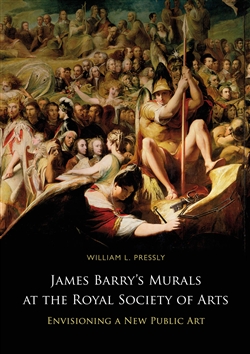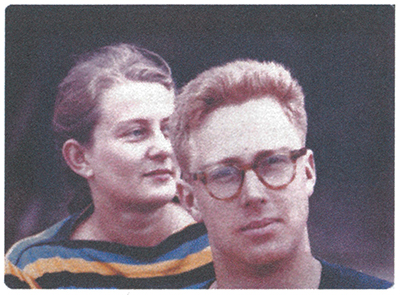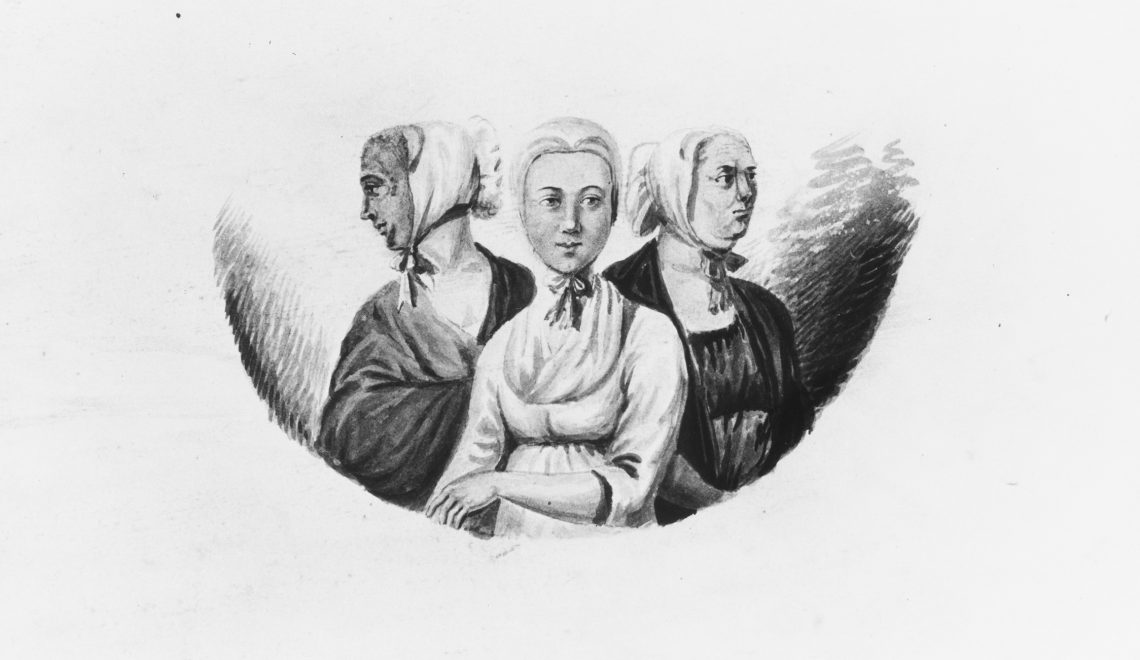William Pressly’s James Barry’s Murals at the Royal Society of Arts won the prestigious Berger Prize for British Art History in December 2015. The review below, by Alexander Gourlay, will appear in the spring 2016 issue of Blake; we are posting it in advance on the blog to celebrate the recognition that the book has received.
Blake refers several times to Barry as a man who was ill served by the art establishment; he records, “Barry told me that while he Did that Work [painted the murals]—he Lived on Bread & Apples.”
Pressly believes that Barry is especially important for Blake studies: “Of all the Irishman’s contemporaries, Blake is the one who most closely shared the breadth and profundity of his vision and the heroic vocabulary by which to express it” (284). As Gourlay says, “Blake starts to look a lot less nutty if we recognize that some of his mystifying referential leaps have precedents in the multicultural multimedia devices with which Barry attempted to communicate with the same audience.”

William L. Pressly. James Barry’s Murals at the Royal Society of Arts: Envisioning a New Public Art. Togher: Cork University Press, 2014. xx + 396 pp. €49.00, hardcover.
Reviewed by Alexander S. Gourlay
This book inspires grandiosity. I am moved to prophesy that James Barry’s greatest exponent will always be William Pressly. Articulate, learned, and judicious, profoundly sympathetic with his subject, appreciative of Barry’s genius and yet clear-eyed about his limitations, Pressly has taken Barry as seriously as the artist could have hoped, and persuasively argues that we should do so as well. With this huge, lavishly illustrated volume, Pressly crowns a stack of books and essays on Barry and his contemporaries,[1] fully elucidating for the first time the spectacularly ambitious (and covertly seditious) program underlying Barry’s masterpiece, the suite of monumental paintings he created to decorate (and consecrate) the Great Room in the Adelphi, the building that houses the Royal Society for the Encouragement of Arts, Manufactures, and Commerce.
This is a grand book in every way except price (a bargain at €49.00). It’s a hefty folio (nearly 14″ by 10″ by 1.5″), its 416 pages of heavy-coated stock weighing almost seven pounds. If the contents were any less engaging, its very magnitude would constitute a severe challenge to reading it. Fortunately, most readers will be happy to wrestle with the book in order to follow Pressly’s crisp, efficient prose and to consider the glorious color images: most of the Barry murals are reproduced twice in their entirety, once in a single page and once in a two-page spread, and then supplemented with large detail images, including the art-book designer’s current favorite, huge bleed details at the start of every chapter. In addition to the primary images of paintings and engravings, many generously scaled supplemental images of all kinds are conveniently arranged for immediate consultation throughout the book, and relevant primary texts, such as Barry’s extensive explanations and contemporary descriptions, are reproduced verbatim. Aside from the challenges posed by sheer scale (and the regrettable expedient of massed endnotes), this handsome book appears to have been designed and laid out with the careful reader’s convenience as a priority.
Pressly opens with a brisk introduction to Barry and to the Adelphi, sketches the context of relevant architectural mural projects in England and elsewhere, and then plunges into exegesis. Perhaps because this book is his swan song on British art, and because comprehensive discussion of these pictures was for various reasons deferred when he wrote his two major studies of Barry in the 1980s, Pressly evidently felt some urgency about explaining all of Barry’s audacious allegory this time. There is little hemming or hawing anywhere in this long book, though the discussion of Barry’s covert promotion of a version of Roman Catholicism is saved for the later chapters. The program of the Adelphi series as a whole is multifaceted and evolved over decades, sprawling off the walls into ekphrastic manifestos, impolitic political digressions, apologiae, and large and small annotated (and serially revised) engravings related to the murals. At its most obvious level Barry’s subject was both simple and inevitable, given the venue: representing the critical stages in the progress, good and bad, of civilization, focusing on the arts and sciences that the society was supposed to promote, and celebrating (and subtly criticizing) the part Britain played and was playing in that progression. It is not clear how much of it all was grasped even by discerning observers like Blake, but these ambitious paintings undoubtedly influenced the younger artist’s conception of what public art could be and how it might be practiced.
Pressly’s analysis of each picture builds upon an extended exegetical selection from Barry’s writings, especially the 1783 Account of a Series of Pictures, in the Great Room of the Society of Arts, Manufactures, and Commerce, at the Adelphi (a copy of which Blake owned). This core text is supplemented by other explanatory and descriptive writings by Barry and others, together with an overview of the significant features of the engravings that he issued at various stages in the development of each subject. The first picture, Orpheus, represents the most basic stage of civilization. Rather than beginning with Adam and Eve as they made the best of the fallen world or a Golden Age derived from Hesiod, Barry chose a scene inspired by Lucretius via Thomson’s Seasons, a world in which humans live independently, eating acorns, and have no more—and perhaps less—fellow feeling than the roving lions that prey on them. Barry’s picture focuses on the role of Orpheus in leading this brutish, selfish, primitive humanity to the beginnings of a simple, pious, family-based society. He represents the critical civilizing contribution of Orpheus not as gently benign Neoplatonic harmonization effected by musical prowess, but as an artistic work, an “enthusiastic” song communicating to his auditors the essence of Barry’s true religion, recognition of sin and ritual expiation through sacrifice. The choice of the quasi-Lucretian proto-civilization in combination with a modified representation of Orpheus’s gift exemplifies the way Barry asserts his cultural/ideological independence. A picture based on Adam and Eve, for instance, would carry with it an ineradicable theology that could at most be nudged in one direction or another. Instead, Barry appropriated, conflated, and adjusted less familiar classical material, then invited allegoresis in Christian terms, a process that must have greatly interested Blake, as would Barry’s focus on social governance through the leadership of an inspired artist/prophet. Although it represents the earliest stage of civilization, Orpheus also foreshadows, in its emphasis on ceremony and a powerful spiritual leader, the very un-Blakean (and un-Lucretian) crypto-Catholic allegorical program that Pressly uncovers in the subsequent pictures.
Barry’s murals also suggest that prophetic wisdom should be shared in degrees with the public at large. In, for instance, Crowning the Victors at Olympia, the picture celebrating the high achievements of the classical era, the Pythagorean philosopher, later specified as Philolaus, muses silently, thumb to mouth, though he holds a scroll revealing the solar system to be heliocentric. In the same painting Barry inserted a portrait of himself as the artist Timanthes, famous for representing the Cyclops. Timanthes sits in the shadow of a sculpture of Hercules trampling the serpent of Envy, displaying Barry’s re-creation of the Cyclops picture. Elsewhere Barry had portrayed himself as a companion being hushed by Odysseus as they escape from Polyphemus’s cave, representing the relationship between him and his more discreet mentor, Edmund Burke. This somewhat paradoxical situation, in which the artist/prophet addresses the audience on two levels, one public and one private, applies as well to Barry’s practice in these pictures, in that he was creating public art to communicate ideas whose most important components could not be expressed forthrightly. This too, as Pressly points out, must have greatly interested Blake, whose own exhibition featuring public art was promoted by materials that bore the envoy “Fit Audience find tho’ few,” and who told his baffled patron Trusler, “That which can be made Explicit to the Idiot is not worth my care.”
Pressly argues that Barry’s classicism is not a mere smokescreen for a Catholic program, but part of the message, in that Barry saw the hierarchy of Roman Catholicism as the ideal universal government because it adds Christian revelation to the Greek/Roman civilizational foundation. In the first picture Orpheus, for instance, represents both John the Baptist and Jesus, and arguably the Pope, while the sacred rituals of the Olympic Games and the assessment and rewarding of the athletes in the third mural provide an allegorical model for the relationship between the State, the Church, and the Arts in a reformed Christian culture (Pressly suggests, for instance, that Barry’s three Olympic judges represent the Trinity). Obviously, Blake and Barry would have differed on the virtues of theocracy and papal patronage, but they might have seen eye to eye on the potential glory of a cultural structure in which rewards were allotted by Christian wisdom rather than the whims of the gods of commerce. And Barry was hardly an advocate for the status quo. For instance, his Triumph of the Thames, which at first glance celebrates the nautical/commercial accomplishments of the nation, also criticizes the slave trade and, less overtly, the commercial/sexual exploitation of women, both of which are major issues in such subversive Blake works as Visions of the Daughters of Albion.
Pressly devotes most of a late chapter to Blake’s artistic relationship with Barry (there was only limited personal contact, as far as we know), describing Blake as both an admirer of Barry and his most sophisticated and ambitious successor in the realm of ideologically original art. Whatever he grasped of Barry’s more recondite themes, Blake must have found in the Adelphi paintings and other works a model for exploiting a rich body of malleable mythic material, as well as pathways to sophisticated allegorical appropriation from such authors as Hesiod, Ovid, Virgil, and others. Pressly sketches both strategic and thematic parallels between the two: both combined painting, prints, and text, supplementing visual with verbal and unique artifacts with mass-produced (or at least multiple) artifacts, and both were concerned about the treatment of the poor, women, slaves, and children. And, perhaps most importantly, both saw art as the potential salvation of British society. But many Blake aficionados will find the most exciting ideas and information in the parts of the book that aren’t explicitly connected to Blake’s works. I am still ruminating about the implications for considering Blake’s exhibition of 1809, which seems to me now to have been as much an unsatirical emulation in little rooms of Barry’s project in the Great Room as it was a parodic reaction to the promotional schemes of Stothard and Cromek. Others will want to rethink relationships between the recognizable references to classical literature in Blake’s works and the ways in which Barry had earlier appropriated and reconfigured the same materials. Blake starts to look a lot less nutty if we recognize that some of his mystifying referential leaps have precedents in the multicultural multimedia devices with which Barry attempted to communicate with the same audience.
The book concludes with a pair of fascinating appendices, the first of which describes the series of prints by means of which Barry augmented, “corrected,” and sharpened the focus of the images in his finished murals, crowding in new figures, changing features of existing figures, and adding captions, notes, labels, and other texts, often making more explicit the import of original or otherwise obscure iconographic or emblematic devices but never telling the whole story. Blake followed a very similar pattern in his Chaucer tempera and the subsequent multi-state print, which revealed a modern set of celebrated physiognomies aligned with the layers of ancient and medieval identities delineated in the painting and described (almost) explicitly in Blake’s prose accounts. In addition to the reenvisioning of his subjects through prints and pamphlets, in 1798 and again in 1801 Barry planned and to some extent executed changes to the murals themselves, some of them substantial and programmatically significant, others perhaps primarily aesthetic. At least two of these changes were undone by officious restoration late in the twentieth century, just as Hogarth’s revisions to Paul before Felix at Lincoln’s Inn were cleaned away forever about the same time; let’s hope that art conservation is never again conceived as requiring the removal of all discernable layers of paint above the artist’s first varnish.
In terms of intellectual content, editorial polish, and quantity and quality of visual matter, this is the most impressive scholarly art book I have seen in some time, and it is all the more impressive for its exceptionally low price. At a time when many academic publishers are charging extortionate prices for poorly written, underedited, and cheaply illustrated books, this one is a virtuous prodigy, heartening in every way.
[1]. Pressly’s books on Barry are James Barry, 1741–1806: History Painter (with Tom Dunne, 2010), James Barry: The Artist as Hero (1983), and The Life and Art of James Barry (1981). Most of Pressly’s articles on Barry are incorporated into his books.


